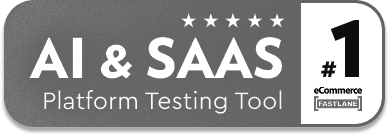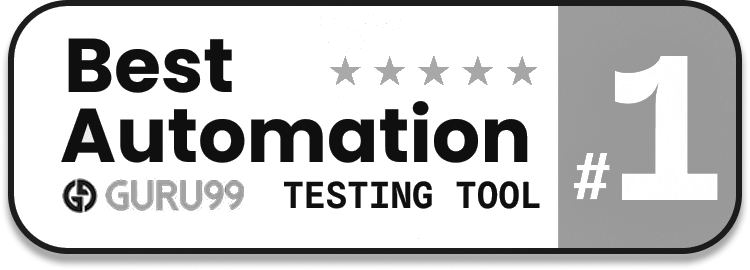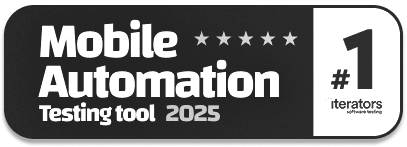How to Utilize Human-AI Collaboration for Enhancing Software Development
|
|
Artificial intelligence (AI) has revolutionized how software is developed and deployed in recent years. AI is no longer a futuristic concept but a practical tool that assists in all the stages of the software development life cycle (SDLC).
However, on the flip side, this AI-driven innovation and progress have triggered discussions about the human role in software development. While AI can automate repetitive and mundane tasks, humans remain indispensable in handling complex tasks, architectural decisions, and understanding user requirements. These tasks are complex for AI to interpret.
Key Takeaways
- AI tools have become essential across the SDLC, handling everything from code generation to automated testing. However, human developers still play a central role in interpreting context, designing architecture, and making strategic decisions.
- AI excels at repetitive, data-driven tasks while humans bring creativity, judgment, and domain expertise.
- Blending human creativity with AI automation accelerates development, improves software quality, and enhances team productivity. It allows developers to focus on innovation while AI manages mundane or technical details.
- From requirement analysis to testing and project planning, AI amplifies productivity at every SDLC stage. Humans complement this by making nuanced decisions and validating AI-generated outputs.
- Case studies from testRigor, GitHub Copilot, and Google AutoML showcase in this article how AI is already transforming development workflows.
- Risks like overreliance, data privacy issues, and team resistance must be mitigated with governance and ongoing education. Clear guidelines and human-centered design are essential to maintain trust and security.
In this article, we explore human-AI collaboration and how developers, teams, and organizations effectively utilize this collaboration to boost productivity, accelerate innovation, and improve code quality in software development. We will also discuss how this synergy helps developers use the full potential of AI-generated code, breaking barriers and paving the way for more groundbreaking advancements.
The Role of AI and Humans in Software Development
AI has revolutionized the code generation process by automating the creation of code snippets, functions, or even entire modules. Natural language processing (NLP) models allow developers to interact with code using natural language, thus simplifying communication and speeding up the development process.
Additionally, deep learning algorithms have made debugging code, identifying errors, and suggesting fixes easier and more accurate. This has boosted the development team’s capabilities, in which these mundane tasks are delegated to machines and humans perform more strategic tasks, such as problem-solving, new innovations, etc.
As a result of this, AI technologies are now integrated into many tools used by developers and engineers, including:
- AI-powered Code Completion Tools: (e.g., GitHub Copilot, ChatGPT, Amazon CodeWhisperer) Provide code suggestions and completions.
- Automated Testing AI Agents: (e.g., testRigor) They automatically generate and execute test cases based on historical data or a description. Read: AI Agents in Software Testing.
- Bug Detection and Code Review Assistants: To identify vulnerabilities or logic flaws in the code.
- NLP Tools: These turn requirements or queries into code.
- Project Management Bots: Analyze work patterns and forecast delivery timelines.
With these AI tools in software development, AI acts as a partner to human developers, automating tasks, suggesting improvements, and helping with decision-making.
The Human Expertise
Although AI has taken over tedious tasks, it does not mean human developers are slacking. Instead, they still play a pivotal role in SDLC by understanding user requirements, making crucial decisions related to architecture, and finding solutions to significant problems. These areas require human creativity, insight, and contextual understanding.
These are all meticulous tasks critical for software development to keep it engaging and user-friendly. Humans can also make strategic decisions to create products that align with their business requirements.
Striking a Balance
AI should not be considered a threat to human jobs, but a medium to enhance their abilities. By accepting AI as a powerful collaborator, humans can scale great heights in software development. By achieving right balance between humans and AI, new era of innovation can be unleashed.
Moreover, AI can help developers learn new coding techniques, best practices, and innovative solutions by interacting with AI tools. If used intelligently, AI can also be a powerful tool to help and amplify human capabilities.
Benefits of Human-AI Collaboration
Human-AI collaboration in software development comes with several benefits as listed here:
- Increased Productivity: AI systems considerably reduce the time needed to write reusable code, conduct testing, and create documentation. With AI doing these tasks, human developers can focus on more strategic tasks of architectural design and problem-solving. Read: AI In Software Testing.
- Enhanced Code Quality: AI tools have capabilities to analyze historical data and patterns and thus can identify potential bugs, security vulnerabilities, and style inconsistencies earlier in the development process. AI also suggests best practices and can enforce coding standards, which reduces technical debt and promotes maintainable codebases. Read: Top 10 OWASP for LLMs: How to Test?
- Faster Time to Market: Since tasks such as code generation, testing, and debugging are streamlined, the entire SDLC is sped up, helping release faster. Read: The Impact of Test Automation on Time to Market.
- Improved Developer Experience: AI systems, by offering contextual suggestions, code snippets, and reminders, act as digital assistants that enhance the overall experience and reduce fatigue.
- Data-Driven Decision Making: With AI’s ability to process vast amounts of data and analyze historical project data, it can offer insights into team performance, predict potential defects and delays, and also optimize resource allocation. This helps developers with better planning and risk management.
Human-AI Collaboration Areas in Software
Human-AI collaboration can benefit the entire SDLC. There are various key areas where human-AI collaboration has an effect. Let us discuss these areas:
1. Requirements Analysis
Natural language requirements are converted into structured user stories or code templates by AI. With NLP, tools can parse documentation, retrieve useful information, and generate UML diagrams.
AI Role: AI parses text, identifies patterns, and suggests standard solutions.
Human Role: Humans can understand business context, stakeholder goals, and ambiguities that require judgment.
2. Code Generation and Auto-Completion
AI-powered code assistants autocomplete entire functions, suggest code blocks, or even generate full modules from developer prompts.
AI Role: In code generation, AI autocompletes functions, suggests libraries, and automates repetitive code patterns.
Human Role: Humans write core logic to ensure the code aligns with business objectives and validate AI suggestions.
3. Automated Testing
AI can generate tests based on historical data or code changes, simulate user interactions, and identify edge cases that might have been overlooked.
AI Role: AI creates, executes, and analyzes tests with high efficiency. Read: Generative AI in Software Testing.
Human Role: Humans design test strategies, review test coverage, and manage test environments.
4. Debugging and Error Resolution
AI tools help in debugging by analyzing logs, tracing errors, and suggesting fixes or error causes. They also provide recommendations for similar issues, for example, from forums like StackOverflow or other documentation sites. Read: Testing vs Debugging.
AI Role: AI plays a part in log analysis, stack trace parsing, and proposing solutions based on data patterns.
Human Role: Humans diagnose complex issues, interpret contextual factors, and validate solutions.
5. Code Review and Refactoring
AI-based code reviewing tools assist with the identification of issues like dead code, code smells, or inefficient algorithms. They also suggest refactoring options. Read: How to Manage Technical Debt Effectively?
AI Role: AI tools perform functions such as pattern identification, enforcing style guidelines, and suggesting optimal structures.
Human Role: Humans ensure code changes align with architectural decisions and team conventions.
6. Project Management and Planning
AI helps in project management and planning by forecasting deliverables, tracking developer velocity, and identifying bottlenecks. It also analyzes data from version control systems, issue trackers, and communication tools.
AI Role: AI performs data analytics, prediction, and task automation.
Human Role: Humans are involved in strategic planning, handling interpersonal dynamics, and adapting to changing priorities.
How to Utilize Human-AI Collaboration?
Organizations must build a collaborative environment to utilize human-AI collaboration in software development. This starts with defining clear roles and responsibilities for humans and AI, and continuously improving AI models. Developers should be equipped with AI tools for code generation and debugging, while humans should also maintain control over decision-making and their expertise.
Here are various aspects of utilizing human-AI collaboration:
1. Build a Collaborative Environment
To create a collaborative environment, focus on the following:
- Open Communication and Trust: There should be a culture wherein AI systems and human developers can communicate openly and collaborate. The environment should encourage trust and transparency.
- Upskilling and Education: Developers should invest considerably in training and upskilling to work effectively with AI tools and technologies.
- Growth Mindset: Continuous learning and improvement should be encouraged so that both humans and AI adapt to growing needs and challenges.
- Iterative and Interactive Processes: A process for humans to provide feedback to AI should be implemented so that AI can adapt in real-time.
2. Define Clear Roles and Responsibilities
Roles and responsibilities for AI and humans should be clearly defined with the help of the following:
- Identify AI Strengths and Human Expertise: Some tasks are best suited for AI (e.g., data processing, pattern recognition), and some for humans, like creativity, judgment, and ethical reasoning.
- Allocate Tasks Appropriately: Humans and AI should be assigned tasks based on their strengths and expertise so that humans can focus on higher-value work.
- Maintain Human Oversight: Humans should have control over critical decisions and provide oversight for AI-generated outputs.
3. Continuously Learn and Improve
AI systems, as well as humans, should continuously learn and improve. This is achieved through:
- Continuous Monitoring and Adjustment: Monitor the AI models regularly and adjust accordingly to ensure they remain relevant to current requirements and perform well.
- Feedback Loops: Create feedback loops so that humans can provide feedback on AI models to improve and refine.
- Data and Insights: Include new data constantly to enhance AI adaptability and performance.
- Skill Development: Encourage skill development for employees to learn how to collaborate more effectively with AI.
4. Consider AI for Specific Tasks
- Specific tasks are performed more effectively by AI than by humans. Identify these tasks for AI:
- Code Generation: AI can help with code generation by generating code snippets, suggesting improvements, and saving developers’ time and efforts.
- Bug Detection and Fixing: AI can identify bugs and also provide suggestions to fix them, leading to high-quality code and faster development cycles.
- Test Automation: With test automation, AI can reduce the manual testing efforts and identify the potential issues earlier in the development.
- Documentation: AI generates documentation and ensures the code is well-documented and easily understandable.
- Project Management: Project management tasks, such as progress tracking and task assignments, can be performed by AI.
5. Ethical Considerations
In addition to all the above aspects, ethical considerations should also be given when utilizing human-AI collaboration.
- Human-Centered AI: Human well-being and values should be prioritized in AI development to ensure that AI systems are aligned with human needs and ethics.
- Bias Mitigation: Potential biases in AI models should be promptly taken care of to ensure fair and impartial outcomes. Read: AI Model Bias: How to Detect and Mitigate.
- Transparency and Explainability: Humans should understand how AI arrives at a particular decision. For this, transparency and explainability should be maintained in AI decision-making processes.
By following these key aspects, organizations can effectively implement human-AI collaboration, enhance software development, drive innovation, and improve efficiency.
Case Studies of Successful Human-AI Collaboration
1. AI-based Automation Testing with testRigor
testRigor is a generative AI-based test automation platform that enables non-technical users to write, manage, and maintain end-to-end tests using natural language. It eliminates the need for complex code-based testing frameworks. The testRigor tool implements human-AI collaboration in the following ways:
- Test Creation: Humans can write/generate/record cases in plain English (e.g., “click on ‘Submit’ button). AI interprets these natural language instructions and maps them to UI elements using NLP, AI context, and computer vision algorithms. Read: All-Inclusive Guide to Test Case Creation in testRigor.
- Test Maintenance: AI handles most of the maintenance by automatically adapting to UI changes. Humans review test results and adjust steps if necessary. Read: Decrease Test Maintenance Time by 99.5% with testRigor.
- Test Execution: Human testers schedule and prioritize test suites, interpret business logic, and manage test environments. AI assists with this by running tests at scale across different browsers and devices, identifying anomalies and regressions.
- Result Analysis: When test results are generated, humans analyze failed tests and make business decisions based on their outcomes. AI systems group similar failures, provide probable root causes, and reduce flaky tests.
Outcome: Product managers, BAs, or manual QA analysts can write tests without aid from automation engineers. With CI/CD integration, thousands of AI-maintained tests can be executed daily. AI also identifies flaky tests, self-heals, and minimizes disruptions. Read how testRigor uses AI to test AI Features. Use testRigor to test the untestable scenarios such as graphs, images, mainframes, user intentions, true/false statements, Flutter apps, and many more.
Read: How to use AI to test AI.
2. GitHub Copilot at Microsoft
GitHub Copilot is developed by OpenAI and GitHub. It has widely been adopted by developers at Microsoft. It functions as a code generation tool and helps reduce time to write reusable code, accelerate onboarding for new developers, and improve productivity.
Outcome: Developers feel at ease when writing unfamiliar code and are more productive and less fatigued.
3. Google’s AutoML in Android App Development
Google’s internal teams use AutoML to optimize machine learning models embedded in Android apps. AutoML can tune models automatically while developers define the architecture and business logic.
Outcome: Overall model performance is improved, saving manual testing efforts at the same time.
Future Directions in Human-AI Software Collaboration
Some of the emerging trends in human-AI software collaboration are:
- AI-First Pair Programming: AI assistants are evolving into virtual pair programmers to collaborate with developers in real-time. They might also participate in live coding sessions, learn codebase, and provide contextual assistance.
- Intent-Based Programming: Developers will explain the desired behavior in natural language, and AI will generate the implementation instead of writing code line-by-line.
- Personalized AI Models: Organizations may develop personlized AI models trained on their codebases, best practices, and style guides. With this AI will be able to make more context-aware suggestions tailored to specific teams or domains.
- Explainable AI in Software Engineering: Future AI tools will contain explainability features to help developers understand why a particular suggestion was made. This will improve trust, learning, and adoption. Read: What is Explainable AI (XAI)?
Challenges and Risks
Despite its advantages, human-AI collaboration also has a few challenges:
- Overreliance on AI can lead to skill wastage or acceptance of incorrect code.
- Security Vulnerabilities may arise from generated code copied from unvetted sources.
- Data Privacy Concerns arise if proprietary code is shared with third-party AI tools.
- Lack of Context-awareness in current AI systems leads to suboptimal suggestions.
- Team’s Resistance due to fear of job displacement or change in workflows.
These challenges can be addressed with thoughtful implementation, continuous training, and governance.
Conclusion
Human-AI collaboration in software development is about empowering humans and not replacing them. AI allows human developers to operate at a higher level of abstraction and efficiency by taking care of mundane tasks such as automating repetitive tasks, accelerating routine, and enhancing creativity.
The organization must invest in the right AI tools, integrate AI into developer workflows, and encourage a culture of continuous learning and adaptation. The collaboration between humans and AI has the power to use the true potential of AI code generation, leading to groundbreaking advancements.
| Achieve More Than 90% Test Automation | |
| Step by Step Walkthroughs and Help | |
| 14 Day Free Trial, Cancel Anytime |












